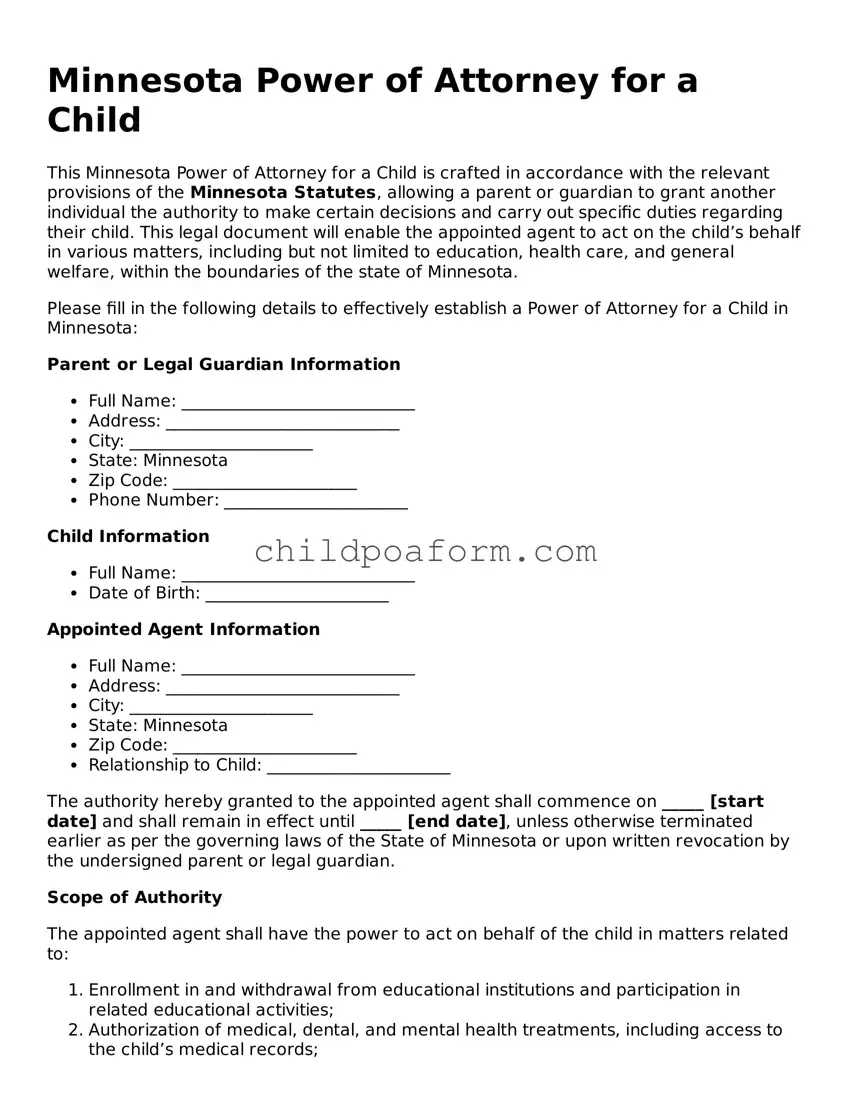Instructions on Utilizing Minnesota Power of Attorney for a Child
Filling out the Minnesota Power of Attorney (POA) for a child is an important process that allows you to legally appoint someone else to make decisions regarding the care of your child in your absence. This can ensure that the child's needs are met when you cannot be there to make those decisions yourself due to various reasons like illness, travel, or military obligations. To complete this process accurately, it's crucial to follow the steps carefully, as this will establish the legal authority of the appointed person, known as the agent, to act on behalf of the child.
- Gather all necessary information, including the full legal names and addresses of the parent(s), the child, and the appointed agent.
- Read the form thoroughly to understand each section before filling it out. This ensures that you're aware of the legal implications and the extent of the authority you're granting.
- In the section designated for identifying the parties, fill in the names and addresses of the parent(s) or legal guardian(s), the child, and the agent.
- Specify the powers being granted to the agent. This involves checking relevant boxes or writing specific powers in the provided spaces. It's crucial to be clear and precise about what decisions the agent can make regarding the child's education, healthcare, and general welfare.
- Set the duration of the POA. Indicate the effective date and, if applicable, the termination date. If no termination date is specified, note the conditions under which the POA will end.
- Review the form with all parties involved. This ensures that there's a mutual understanding of the powers granted and the expectations from each party.
Once the form is filled out, it must be signed and notarized. This typically requires the presence of the parent(s) or legal guardian(s), the agent, and a notary public at the signing. It's essential to follow your state's specific requirements for notarization, as failing to do so could invalidate the POA. After notarization, distribute copies to all parties involved and any institutions or individuals that may need to recognize the agent's authority, such as schools, doctors, or government agencies. By taking these steps, you'll ensure that the agent has the necessary legal authority to care for your child according to your wishes.
